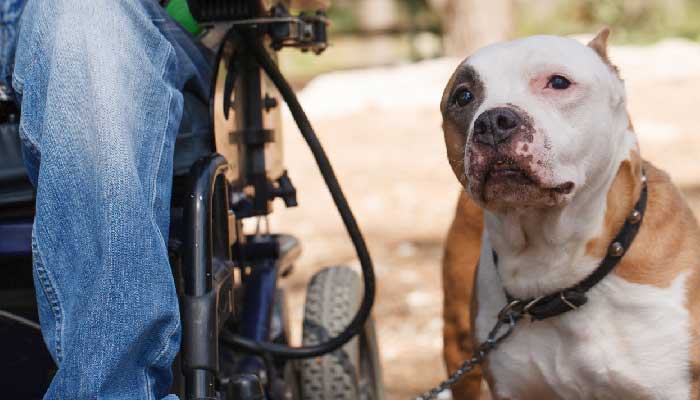People with disabilities may take assistance from service animals and emotional support animals for a number of  reasons under the New Reasonable Accommodations Act. Even though a lease says “No pets” or restricts pets, landlords are obligated to make what is known as “reasonable accommodation”, and permit pets who help as assistance or service animals, this includes animals that offer emotional support. The ADA defines a service animal as any dog that is individually trained to do work or perform tasks for the benefit of an individual with a disability, including a physical, sensory, psychiatric, intellectual, or other mental disability.
reasons under the New Reasonable Accommodations Act. Even though a lease says “No pets” or restricts pets, landlords are obligated to make what is known as “reasonable accommodation”, and permit pets who help as assistance or service animals, this includes animals that offer emotional support. The ADA defines a service animal as any dog that is individually trained to do work or perform tasks for the benefit of an individual with a disability, including a physical, sensory, psychiatric, intellectual, or other mental disability.
The difference between service and companion animals in rental housing with respect to Reasonable Accommodation can be tricky. While a service dog must be trained to perform work or tasks, a companion animal or therapy dog merely provides comfort and companionship. Companion dogs may be allowed in housing under the Fair Housing Act (FHA) but not permitted in public places since they are untrained.
More and more tenant are requesting for assistance animals and with more mental health studies showing the benefits that animals have for certain mental and physical disabilities, this trend seems to be on the rise. For landlords and property managers, avoiding any untoward situations by staying on top, need to get educated quickly on federal, state and local laws.
Reasonable accommodations are defined as when a tenant asks a landlord to make a change in an existing rule or policy so they have an equal opportunity to enjoy the unit and surrounding property. In order to qualify for reasonable accommodations due to disability, the tenant must meet the following conditions:
- Have a physical or mental impairment that substantially limits one or more major life activities (such as walking, seeing, working, cleaning, dressing, and so forth),
- Have a history such impairments,
- Be regarded as having such impairments.
Examples of Assistance/Service Animals:
- A cat who can detect when a person with a seizure disorder is about to have one and alerts the person so that he has time to prepare.
- A dog who alleviates a person’s depression or anxiety.
- A cat who reduces a person’s stress-induced pain.
- A bird who alerts a person with hearing issues when someone has come to the door.
For more on how to comply with reasonable accommodations requests related to service and companion animals, join this webinar “Reasonable Accommodations – Service Animals vs. Companion Animals” by expert speaker Andrea Champine, a professional with 20+ years of experience in the affordable housing industry. During this session Andrea will provide you the answers and tools that you need in order to ensure that your policies and practices comply with fair housing requirements.




